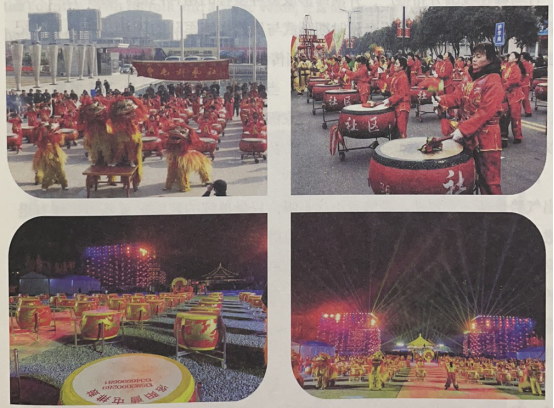申报地区:洛龙区2009年06月 第2批
传承人:省级-2010年06月 第2批:张德宽
市级-2010年04月 第1批:王光午
2016年10月 第3批:王正义、张留召
曹屯位于洛龙区中部,北依隋唐故城,南临龙门石窟,西望熊耳青黛,东傍清流伊水。现有3000多口人,是一个历史悠久的乡村并因传承了数百年的排鼓而遐迩闻名。洛龙区近年来的发展,不仅给曹屯人的生活带来了翻天覆地的变化,也使这个以排鼓闻名的村庄显示出独特的魅力。
曹屯流传的一个故事,讲述了曹屯人与排鼓的渊源。曹兵讨伐董卓之时,当地村民敲锣打鼓相迎。为一举击破董卓军,曹操又命人做了60面大鼓,令村民击鼓而歌,鼓舞军心士气。从那以后,打鼓就成为当地村民的一种习惯沿袭下来,村民中也不乏鼓艺高超之人。
鼓,是最古老的打击乐器之一。相传在黄帝征伐蚩尤的逐鹿之战中,就有造鼓并击鼓壮军威打胜仗的记载,可见我们的祖先很早就掌握了鼓的制作和运用方法。
据洛阳关林庙碑记载,明神宗万历二十年(公元1593年),关林已经形成数万人规模的关王冢会,每逢农历五月十三、九月十三,善众云集。这种自发的活动当时被称为“朝冢”。每逢此时,曹屯关帝社排鼓队等民间社火组织要在活动中表演,排鼓是当时影响面最广、参加人数多、规模最大的助祭形式。
在清康熙、乾隆、道光、嘉庆、光绪年间,关林的祭祀活动都十分隆重。每逢祭祀,均有地方官主祭,声势浩大。由曹屯排鼓、李屯狮舞与高跷曲子合作的“文武跷”表演,成为当时颇有特色的表演项目,这些项目也助推了洛阳曲剧的诞生。
如今,曹屯排鼓有6套鼓谱经历了400年的传承而不衰。曹屯排鼓的特色是表演阵容强大,套路严谨,沉稳中见悠远,昂扬中蕴着激越,被专家誉为中原排鼓艺术的活化石。

A legend told in Caotun tells the origin of Paigu. When Cao Cao sent armed forces to fight Dong Zhuo, local Villagers beat drums and gongs to welcome him .What's more, in order to defeat Dong Zhuo's army at one stroke, Cao Cao ordered to make 60 big drums, with which Villagers use to encourage the morale of the army. Since then, beating drums has become a tradition of the local Villagers. With the largest number of participants, Paigu performance was the most influential form of sacrificial offering at that time. During the reign of Emperors Kangxi, Qianlong, Daoguang, Jiaqing, and Guangxu in the Qing Dynasty, sacrificial activities in Guanlin were very grand. The show "Wen Wu Qiao", a combination of Caotun Paigu, Litun lion dance and stilt tunes, became a special event at that time, and further boosted the birth of Luoyang opera. Today, Caotun Paigu has been rated as a provincial intangible cultural heritage. Its six sets of drum music have experienced 400 years of inheritance, and is known by experts as the living fossil of the Paigu performance in Central regions.
